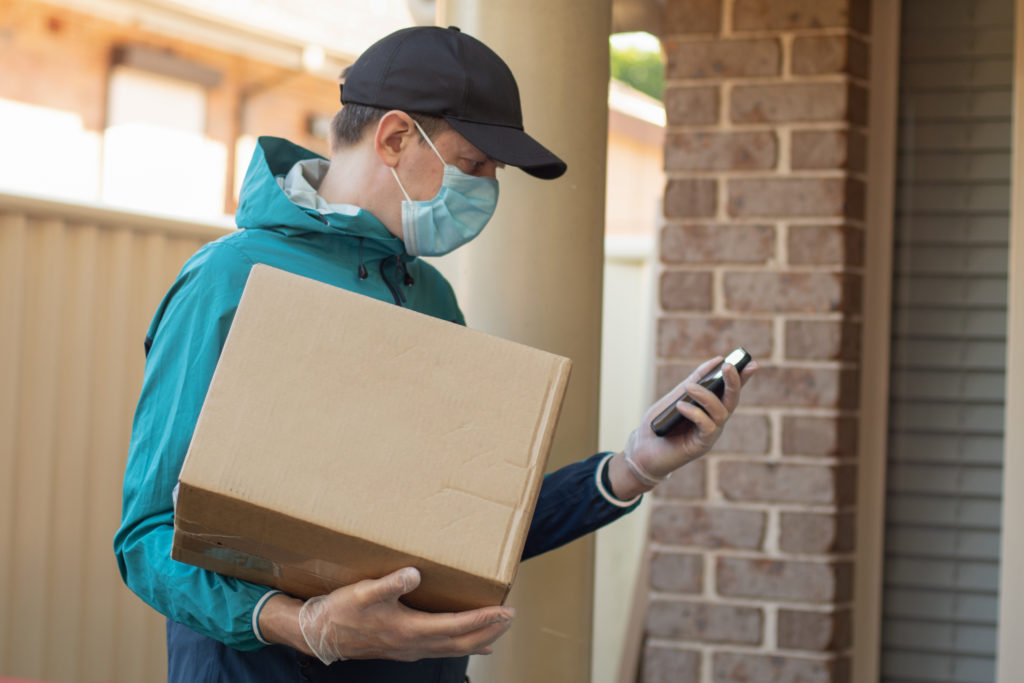
Electronic bills of lading are becoming more and more common as both trucking companies and customers adopt the technology as an extra precaution to keep truck drivers safe.
The coronavirus pandemic rages on, and shippers are still doing what they can to ensure the safety of truckers serving at the front lines of America’s pandemic response efforts. Many companies have already been using electronic documents in lieu of traditional paperwork for years, as electronic bills tend to improve transaction efficiency and workflow, but with the focus on safety and limited person-to-person contact, virtual documents have become more prevalent in the industry than ever.
“Because of COVID, and the health and safety component, it shined a light on an issue that was ripe for further discussion and refinement, said Tom Madrecki, vice president of supply chain and logistics for the Consumer Brands Association, which recently implemented a Contactless Delivery Task Force. “All of a sudden, it became really paramount that everyone in the supply chain stayed safe.”
Soon, the task force grew to nearly 40 members throughout the industry of packaged goods, including carriers, tech facilitators, and retailers alike.
The task force, which focuses on furthering the current momentum of finding more contactless delivery options, is working to boost the widespread utilization of contactless delivery as a practice. These methods include the updating of delivery processes, data sharing, and carriers’ current delivery platforms.
Task force member and Coyote chief network solutions officer Nick Shroeger believes supply chain workforce safety is extraordinarily important right now, and that universal contactless delivery practices are a no-brainer.
“If you think about where there’s the most interaction between different companies between carrier and shipper, it is when the driver is checking in and checking out, so how do we reduce the amount of manual touch points and contact points between two individuals?” Shroeger asked. “When you’re intersecting with so many independent drivers that check in and out of the facility, it’s hard to have that standardized process or practices to ensure safety for your people.”
This worry brings the chance to create an industry-standard solution, he explained.
Madrecki agreed, adding that companies also need a solution that will be easy enough to use across the industry and across current company technology. Additionally, Shroeger and Madrecki both mention the “app fatigue” that already exists among many truckers who have been adapting to so much new technology on the job.
“Carriers don’t want 15 apps when they pull into a facility,” Madrecki said. “Everybody wants a solution, just one, that accounts for those different use cases and needs.”
Bills of lading–which work as contracts between consignors and consignees, as well as freight receipts and official documentation of transfers of goods–had already been heading towards becoming widely electronic before the pandemic. Now, electronic bills are becoming standard much more quickly than previously expected due to the safety concerns arriving with COVID-19.
“It takes a lot of human interaction to pick up and deliver a load,” said Robert Solimani, Vice President of Stevens Transport. “What COVID has done is have people thinking outside the box. It has spurred the industry into advancing current technology into the 21st century to allow carriers, shippers, and receivers to be on the same page as to how to make us more efficient.”
Zonar Systems has been utilizing electronic bills of lading consistently for about four years already, after releasing Zonar Forms (ZForms) to replace paperwork in an effort to expedite the driver-to-dispatch process. A ZForm allows for electronic signatures and digital bill of lading records.
“Obviously, with the [electronic logging device] mandate, that changed a lot of carriers and how they managed their [fleets],” explained Zonar’s vice president of safety and compliance, Fred Fakkema.
Electronic document management has also been made available within ELD and trucking tech provider KeepTruckin, whose fleet management software allows drivers to manage documents, including bills of lading, right on its mobile app.
“Paper logs, bills of lading, and manual paperwork are a big pain point for drivers,” said KeepTruckin’s head of safety and compliance product team, Abhishek Gupta. “Historically, they had to store paperwork in the truck and had to fax it or drop it off. It is time-consuming, error-prone, and not easy to keep track of. We built this app to streamline the process.”
Although many trucking company leaders say a 100% switch from paper may not be possible anytime soon, Gupta believes electronic documentation has only just begun.
“The uptick has been there since the mandate, and with COVID, it is more important than ever,” said Gupta. “But the benefit of the technology for the driver or back-office staff has been so remarkable, it will only continue the trend. More fleets and drivers will realize that embracing technology will be beneficial in the long-term. In a post-pandemic world, the trend will only accelerate.”
Reader Interactions